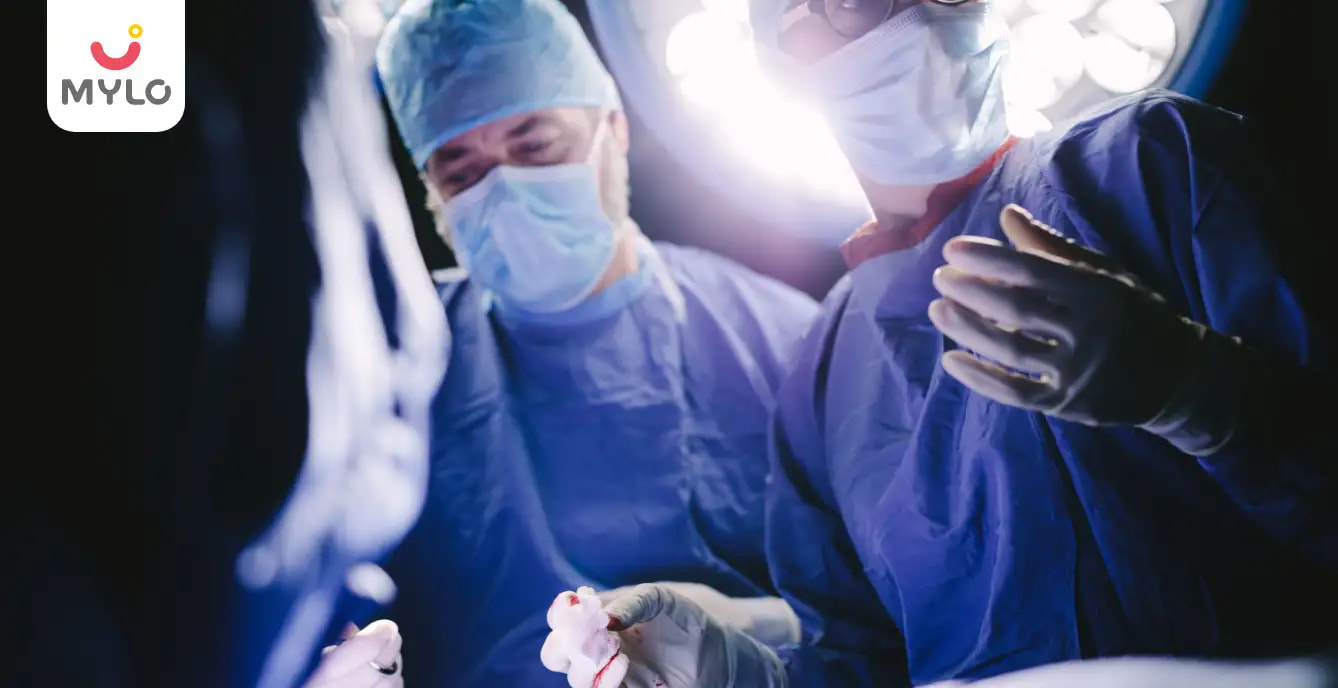Home

TESA IVF: How This Procedure Can Help You Achieve Your Dream of Parenthood
In this Article

Getting Pregnant
TESA IVF: How This Procedure Can Help You Achieve Your Dream of Parenthood
Updated on 17 July 2023
TESA IVF is a well-known fertility treatment that has been gaining popularity in recent years. It is a procedure that helps men with fertility issues achieve parenthood. This treatment is specifically designed for men who have a low sperm count, poor sperm motility, or abnormal sperm shape.
In this article, we will explore what TESA in IVF is, who can benefit from it, its success rates, pros and cons of TESA treatment, how it is different from traditional IVF, what to expect during the TESA procedure and recovering from it.
What is TESA in IVF?
TESA stands for Testicular Sperm Aspiration. It is a procedure that is used for men who have difficulty producing sperm. This method is different from traditional IVF in that it involves the extraction of sperm directly from the testicles, rather than from the semen. TESA is performed under local anesthesia and is a relatively simple procedure.
During TESA, a fine needle is inserted into the testicle and sperm is aspirated. The sperm is then used in the IVF process, where the woman's eggs are fertilized with the sperm in a laboratory. This process is known as intracytoplasmic sperm injection (ICSI).
Who can Benefit from TESA in IVF?
TESA is a good option for men who have:
-
Low sperm counts
-
Abnormal sperm shape.
-
Had a vasectomy and are looking to reverse it.
TESA is not recommended for men who have no sperm production or whose testicles are not producing sperm due to a medical condition.
You may like also : Azoospermia and Male Fertility: What Every Man Should Know
What are the Success rates of TESA in IVF?
TESA procedure has a high success rate in helping couples achieve pregnancy. TESA IVF success rates depend on several factors, including the quality of the sperm extracted, the age of the woman, and the overall health of both partners. However, studies have shown that the success rate of TESA in IVF is similar to that of traditional IVF.
You may also like : Embryo Freezing: Purpose & Outcome
What are the Pros and Cons of TESA Treatment?
Here are some pros and 5 cons of TESA IVF treatment:
Pros:
1. High success rates:
TESA IVF has a success rate of up to 60%, making it a reliable option for couples struggling with infertility.
2. Enables fatherhood in cases of male infertility:
TESA IVF enables men with low sperm count or other fertility issues to become biological fathers.
3. Cost-effective:
TESA IVF is often less expensive than other fertility treatments such as ICSI or donor insemination.
4. No risk of genetic abnormalities:
TESA IVF does not carry any risk of genetic abnormalities that can occur with donor sperm or eggs.
Cons:
1. Invasive procedure for men:
TESA involves inserting a needle into the testicles, which can be uncomfortable and invasive for some men.
2. Risk of infection:
TESA IVF carries a risk of infection, which can lead to complications and reduce the chances of success.
3. Emotional stress:
The process of TESA IVF can be emotionally stressful for couples, especially if the procedure is not successful.
4. Limited availability:
TESA IVF may not be available in all fertility clinics, which can limit access to the treatment for some couples.
You may also like : Freezing Sperm: Preserving the Possibility of Parenthood
TESA IVF vs. Traditional IVF
TESA IVF is different from traditional IVF in that it involves the extraction of sperm directly from the testicles, rather than from the semen. This method is used for men who have difficulty producing sperm. Traditional IVF is used for couples who have other fertility issues, such as blocked fallopian tubes or endometriosis.
TESA Procedure Side Effects
TESA is a relatively safe procedure, but like all medical procedures, it does carry some risks. Some of the side effects of TESA may include swelling, bruising, or discomfort in the testicles. In rare cases, TESA may cause infection in the testicles. It is important to discuss the risks and benefits of TESA with your doctor before undergoing the procedure.
What to Expect During the TESA Procedure?
TESA is a relatively simple procedure that can be performed under local anesthesia. During the procedure, a fine needle is inserted into the testicle and sperm is aspirated. The sperm is then used in the IVF process, where the woman's eggs are fertilized with the sperm in a laboratory. The entire procedure usually takes less than an hour.
Recovering from TESA Treatment
Recovery from TESA is usually quick and easy. Most men are able to return to their normal activities within a day or two of the procedure. However, it is important to avoid strenuous activities and sexual intercourse for a few days after the procedure to allow the testicles time to heal.
Final Thoughts
TESA IVF is a safe and effective treatment for men who have fertility issues. It is a good option for men who have low sperm counts, poor sperm motility, or abnormal sperm shape. TESA has a high success rate in helping couples achieve pregnancy, and it is a less invasive option than traditional methods of extracting sperm. If you are considering TESA IVF, it is important to discuss the risks and benefits of the procedure with your doctor. With the help of TESA IVF, you can achieve your dream of parenthood.
References
1. Al-Malki AH, Alrabeeah K, Mondou E, Brochu-Lafontaine V, Phillips S, Zini A. (2017). Testicular sperm aspiration (TESA) for infertile couples with severe or complete asthenozoospermia. Andrology.
2. Lindheim SR, Crumm K, Fisch H, Sauer MV. (2001). Testicular sperm aspiration (TESA) and its application in oocyte donation. Arch Androl.



Written by
Anandita Sharma
Drawing on more than a decade of expertise in administration, Anandita Sharma currently serves as a content operations e
Read MoreGet baby's diet chart, and growth tips

Related Articles
Related Questions
Hello frnds..still no pain...doctor said head fix nhi hua hai..bt vagina me pain hai aur back pain bhi... anyone having same issues??

Kon kon c chije aisi hai jo pregnancy mei gas acidity jalan karti hain... Koi btayega plz bcz mujhe aksar khane ke baad hi samagh aata hai ki is chij se gas acidity jalan ho gyi hai. Please share your knowledge

I am 13 week pregnancy. Anyone having Storione-xt tablet. It better to have morning or night ???

Hlo to be moms....i hv a query...in my 9.5 wk i feel body joint pain like in ankle, knee, wrist, shoulder, toes....pain intensity is high...i cnt sleep....what should i do pls help....cn i cosult my doc.

Influenza and boostrix injection kisiko laga hai kya 8 month pregnancy me and q lagta hai ye plz reply me

RECENTLY PUBLISHED ARTICLES
our most recent articles

Sensory Development
How Can You Encourage Sensory Play for Your Baby and What are Its Benefits?

IVF Pregnancy
After How Many Weeks IVF Pregnancy Is Safe: Understanding The Ideal Timeline

Exploring the Senses: 9 Incredible Benefits of Sensory Play for Your Child's Development

Childproofing
The Ultimate Guide to Childproofing Your Home

Books
Start Their Love for Reading Early: The Best Books for Baby's First Library

Illnesses & Infections
CMPA (Cow's Milk Protein Allergy): Identifying Symptoms and Understanding Treatment
- Birth Control Options While Breastfeeding: Balancing Parenthood and Contraception
- Period During Breastfeeding What Every New Mother Should Know
- Role of Stories and Rhymes in Your Baby’s Brain Development
- Intracytoplasmic Sperm Injection (ICSI) How It Can Help Treat Male Infertility
- Baby Sleeping While Breastfeeding: Understanding the Causes and Solutions
- Lump in Breast During Breastfeeding How to Identify, Treat, and Prevent Lump Formation
- Understanding Down Syndrome: A Comprehensive Guide for Parents
- No Breast Milk After Delivery: What to Do & What are the Factors Responsible
- Lactation Failure: A Comprehensive Guide to Understanding the Causes and Solutions
- Breast Pain During Pregnancy: What to Expect and How to Find Relief
- Baby Spit Up: The Ultimate Guide to Causes, Prevention, and Management
- Unexplained Infertility: Breaking Down the Factors and Finding Solutions
- Mulethi: Unraveling the Therapeutic Potential of Licorice Root for Your Overall Health
- 5 Steps to a Healthy Lifestyle: The Blueprint for Your Wellness Journey


AWARDS AND RECOGNITION

Mylo wins Forbes D2C Disruptor award

Mylo wins The Economic Times Promising Brands 2022
AS SEEN IN
















- Mylo Care: Effective and science-backed personal care and wellness solutions for a joyful you.
- Mylo Baby: Science-backed, gentle and effective personal care & hygiene range for your little one.
- Mylo Community: Trusted and empathetic community of 10mn+ parents and experts.
Product Categories
baby carrier | baby soap | baby wipes | stretch marks cream | baby cream | baby shampoo | baby massage oil | baby hair oil | stretch marks oil | baby body wash | baby powder | baby lotion | diaper rash cream | newborn diapers | teether | baby kajal | baby diapers | cloth diapers |








